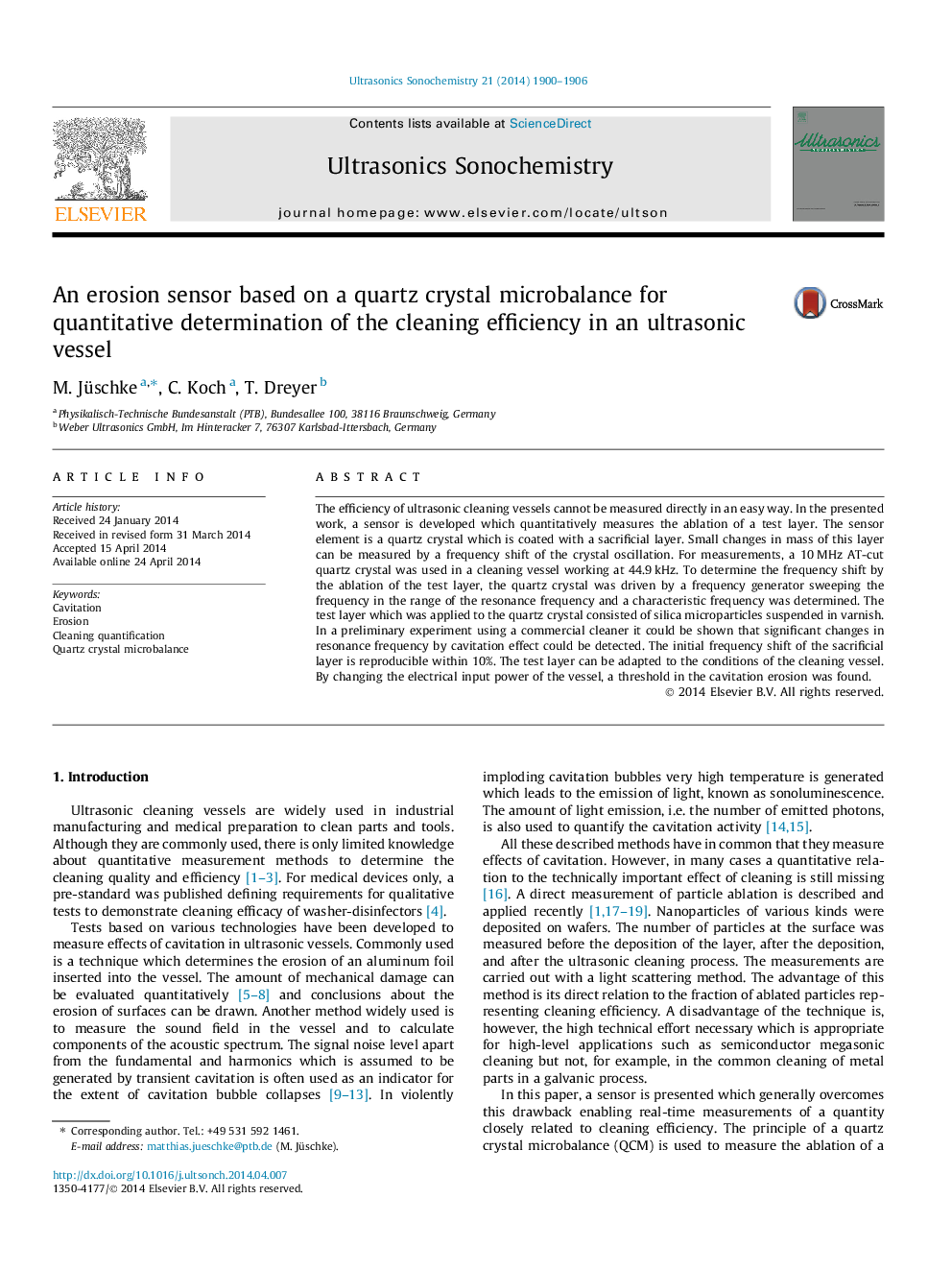| Article ID | Journal | Published Year | Pages | File Type |
|---|---|---|---|---|
| 1266118 | Ultrasonics Sonochemistry | 2014 | 7 Pages |
•A sensor is introduced to measure erosion of a test layer in a cleaning vessel.•The sensor element is a quartz crystal microbalance; small changes in the mass of the test layer can be detected.•The test layer consists of a suspension of microparticles in varnish.•Layer is reproducible within 10%.•Varying the input power, a threshold in cleaning efficiency can be detected.
The efficiency of ultrasonic cleaning vessels cannot be measured directly in an easy way. In the presented work, a sensor is developed which quantitatively measures the ablation of a test layer. The sensor element is a quartz crystal which is coated with a sacrificial layer. Small changes in mass of this layer can be measured by a frequency shift of the crystal oscillation. For measurements, a 10 MHz AT-cut quartz crystal was used in a cleaning vessel working at 44.9 kHz. To determine the frequency shift by the ablation of the test layer, the quartz crystal was driven by a frequency generator sweeping the frequency in the range of the resonance frequency and a characteristic frequency was determined. The test layer which was applied to the quartz crystal consisted of silica microparticles suspended in varnish. In a preliminary experiment using a commercial cleaner it could be shown that significant changes in resonance frequency by cavitation effect could be detected. The initial frequency shift of the sacrificial layer is reproducible within 10%. The test layer can be adapted to the conditions of the cleaning vessel. By changing the electrical input power of the vessel, a threshold in the cavitation erosion was found.
